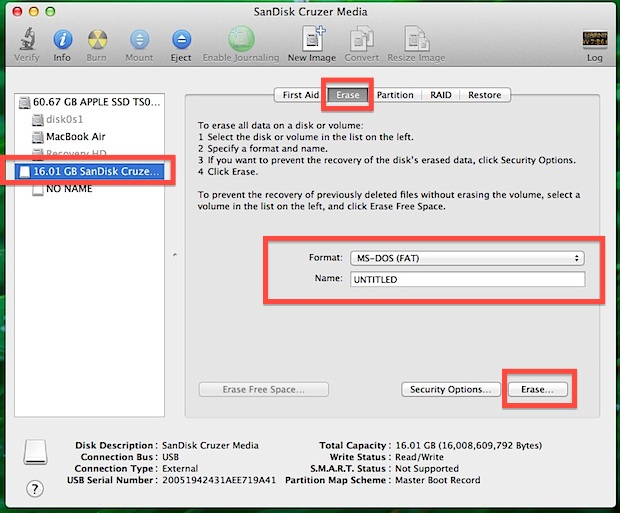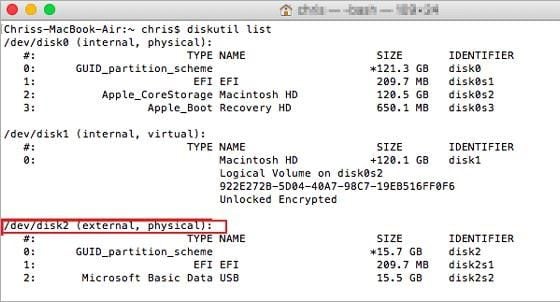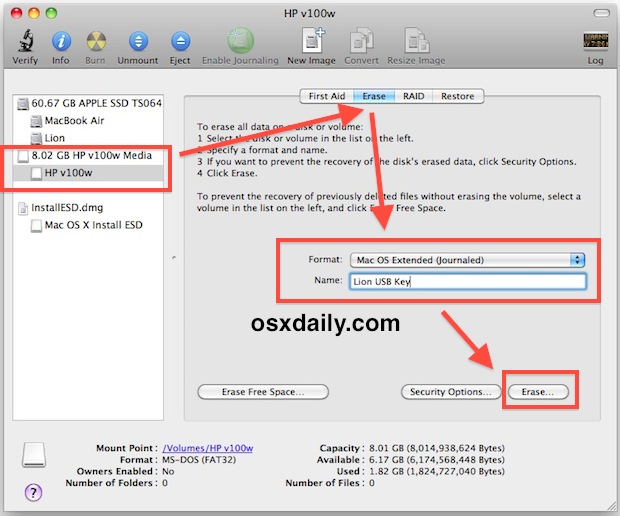Flash drive also called pen drives that basically used for exchanging data such movies, files, documents and some other kind of stuff. It was way to easily to move or copy files from computer to flash drive.

The first part is for Mac users, and the second part is for PC users (Windows 10 based). In no particular order. Part 1: Formatting USB Drive On Mac. Please note: since OS X 10.11 El Capitan, Apple made a few changes to Disk Utility (see details from this ComputerWorld article). The app now has a new user interface that looks slightly different. Format an External Disk or Flash Drive for Mac in Maverics Now type a new name for the Volume and select the format type as Mac OS Extended (Journaled). Now click the “Erase” button and confirm again on the next pop-up window to format the External Disk or a Flash Drive for Mac.
You’ve probably know that flash drive was external device and when you connected it with your computer it comes with some virus that harmful for your computer system. But you can easily use scanning program to scan the flash drive to remove all harmful virus.
So to remove unwanted stuff and viruses from flash drive you’ve to make it format using a flash drive formatting tools. If this article we demonstrate how you can format flash drive on mac.
Also Read : How To Delete Files From Flash Drive on Mac
,
There are several applications available online for formatting USB drives such as 321Soft USB Flash Recovery for Mac ,Data Recovery for Mac, and Disk Drill . These third party tools allow to format flash drive on your mac.
But if want to format a flash drive without using third party tools then. In this case you can use disk utility program to format pen drive on mac.
Step 1 :
Connect your Flash Drive with mac through USB port
Step 2 :
Now launch Disk Utility now move to Applications > Utility.
Step 3 :
When you located your flash drive name on left side panel, Click on it
Step 4 :
Go to Ease tab. Change ‘Format’ to ”Mac OS Extended (Journaled)”. After that named the device if you want to change the name of the your flash drive.
Step 5 :
In this final step Click on the Ease button to conform you want to format the device.
For Apple Mac users, there are two ways to format USB flash drive to FAT32, including Disk Utility and Terminal command line. Refer to detailed steps of using both tools for FAT32 format. Formatting would erase data completely, make sure that you have a data backup. Otherwise, you can use data recovery software to recover data from a formatted USB drive.
Are you looking for a secure way to format USB to FAT32 on Mac? You are at the right place. Follow here, you can find two methods that will assist you in doing so on your storage device. And if you lost data during the formatting, reliable Mac file recovery software is ready to help anytime:
| Workable Solutions | Step-by-step Troubleshooting |
|---|---|
| Method 1. Use Disk Utility | Connect USB to Mac > Go to Applications > Utilities > Disk Utility > Select USB and click 'Erase'...Full steps |
| Method 2. Use Terminal Command | Connect USB to Mac > Hit cmd + space keys > Type terminal and hit Enter...Full steps |
| Bonus Tip. Recover Formatted Data | If you lost data due to formatting, run EaseUS file recovery software > Scan and recover formatted data...Full steps |
How to Format a USB Flash Drive with Mac to FAT32
Computer users who use a USB might have the demand for formatting it to the FAT32 file system. Compare with the other commonly used NTFS file system on a flash drive, FAT32 has a compatibility advantage across many operating systems.
It's a universal format that is compatible with Mac OS X/macOS, Windows, Linux, and DOS systems. So, if users anticipate using the flash drive with more than one operating system, they will definitely benefit from the FAT32 file system. For Apple Mac users, there are two ways to format a USB flash drive to FAT32, namely Disk Utility and Terminal command line. Below are the detailed steps of the FAT32 format with both methods.
Method 1. Format FAT32 on Mac [Disk Utility]
To format USB to FAT32 with Disk Utility will erase all data on the flash drive, so before you doing so, please do remember to check whether you have saved useful data to another secure device in advance.
To format the USB drive to FAT32, follow the next steps:
Step 1. Connect the USB flash drive to your Mac computer.

Step 2. Go to Applications >Utilities > Double click and open Disk Utility.
Format A Disk
Step 3. Select your USB flash drive on the sidebar, choose Erase.
Step 4. Rename the USB flash drive (optional).
Step 5. Choose the format as MS-DOS (FAT) for Format, Master Boot Record for Scheme. Then click Erase.
Wait for the process to complete, then you'll get an empty new USB flash drive with FAT32 as the file system. You can use it for saving data again.
Method 2. Format FAT32 on Mac [Terminal Command Line]
The command-line behavior does the same way to erase data with the Disk Utility. Again, create a backup before taking this action.
To format FAT32 on Mac with Terminal, follow the next steps:

Step 1. Connect the USB flash drive to your Mac computer.
Step 2. Hit cmd + space to run Spotlight, type: terminal, and hit Enter.
Step 3. Type: diskutil list and find out which disk is your USB drive.
Step 4. Type: sudo diskutil eraseDisk FAT32 MBRFormat /dev/disk2.
- sudo gives you user right.
- Diskutil calls disk utility program.
- eraseDisk commands to format.
- FAT32 sets the file system.
- MBRFormat tells disk utility to format with a Master Boot Record.
- /dev/disk2 is the location of the USB drive.
Wait for the process to complete. After this, you can type 'diskutil list' in the command again to check if the formatting has been successful.
Bonus Tip: How to Recover Data from Formatted USB
Formatting the USB would erase the data on it completely, so please make sure that you have a backup. If you don't, you can count on data recovery software to retrieve the lost data.
Mac Disk Utility Format Options

Format Flash Disk Mac

EaseUS Data Recovery Wizard has both Windows and Mac versions, so it's a good choice for data recovery, no matter you're using a PC or Mac. For Mac users, it only takes a few clicks for the software to scan and display the formatted data. To guarantee an effective data recovery without spending money to no avail, you can install the Mac data recovery free version for the first trial. You can preview all the found data before the final recovery.
To recover data from a formatted USB flash drive on Mac, follow the next steps:
Step 1. Correctly connect your USB flash drive to your Mac. Launch EaseUS Data Recovery Wizard for Mac. Start selecting the flash drive and click 'Scan' to let the software search lost files on it.
Step 2. After a quick scan and deep scan, all files will be presented in the left panel in the scan results.
Step 3. Select files you want to recover and click the 'Recover Now' button. Don't save the recoverable files to the USB drive itself in case of data overwriting.
